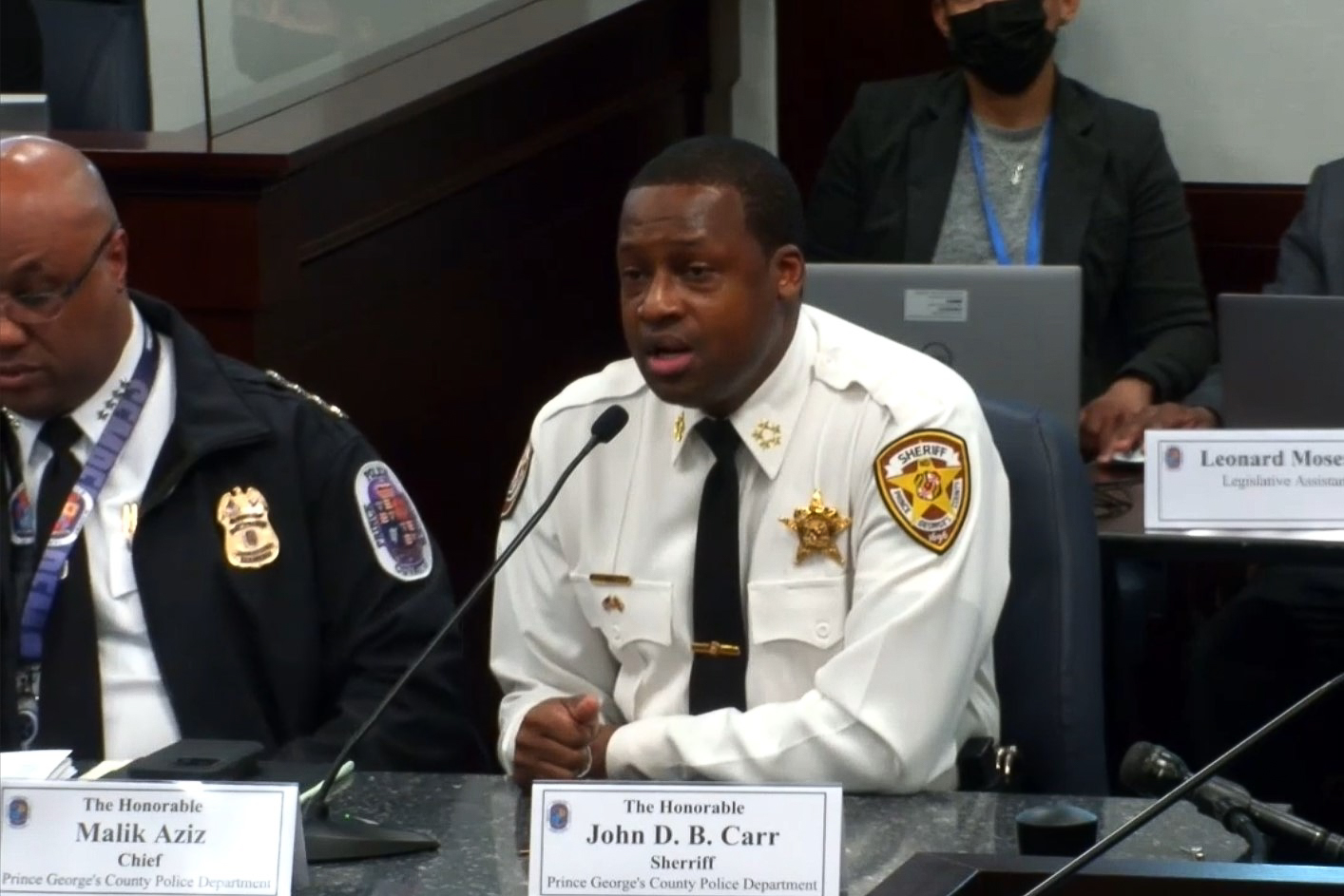Prince George’s County high school students and law enforcement officials discussed the county’s rising youth crime in a public hearing at Tuesday’s county council meeting.
The hearing included several law enforcement leaders such as state’s attorney Aisha Braveboy, county police chief Malik Aziz and county sheriff John Carr. The officials gave presentations about youth crime and then answered questions from local high school students.
The presentations included the latest juvenile crime statistics in the county and the efforts by the county to stunt rising crime.
Aziz raised alarms about the rise of juvenile carjackings in the county over the past few years. There were 89 juvenile arrests for carjacking in 2021, 109 juvenile arrests in 2022 and 26 so far this year.
Braveboy echoed Aziz’s concerns regarding the rise in carjackings and hoped to raise awareness about the legal consequences by juveniles. Juveniles who are 16 or older will be charged as adults for armed carjackings.
“Young people are making decisions that may impact decades of their lives,” Braveboy said.
Braveboy also highlighted the “Our Streets, Our Future” initiative, a key initiative led by the state’s attorney’s office to address the spike in crime. The movement aims to reduce youth gun violence in the county through mentorship opportunities, professional development and neighborhood watch programs. Braveboy hopes the program strengthens its partnership with Prince George’s County Public Schools to increase youth involvement.
[Prince George’s County Council debates two competing rental assistance bills]
After the presentations, students in attendance expressed their concerns with the current law enforcement practices in the county to the panel.
Oxon Hill High School student Kynnedi Sheppard emphasized the importance of adding speeding cameras in school zones across the county. Sheppard alluded to a car accident on March 7 in Upper Marlboro that killed Wise High School senior Cayliy Haygood.
“There should be more police involved around schools to protect the new, beginner drivers,” Sheppard said.
District 6 council member Wala Blegay, who represents Upper Marlboro, highlighted that there have been numerous accidents on the road where Haygood died due to a lack of basic traffic measures.
Local leaders are in the process of adding more traffic lights and speed cameras to the area, Blegay said.
Another major point of contention among a number of students, including Sheppard, is the lack of trust between community members and the police department. Many students cited policing stereotypes as a driving factor for the distrust among younger generations, which often escalates to tense encounters with officers.
[Maryland General Assembly introduces bill to create selection panel for PGCPS CEO search]
Aziz drew parallels between the students and himself, when he was a teenager.
“When I saw the police, I went the other way,” Aziz said. “I didn’t know how to break down those barriers until I met a police officer who was my friend’s father.”
Aziz’s predecessor, Hank Stawinski, resigned in 2020 after a 94-page report found systemic racism was entrenched in the county police department. The county later launched a Police Reform Work Group to increase the police relationship with community members.
Some students said more police engagement at community events, such as pep rallies, would boost trust.
Moving forward, District 9 council member Sydney Harrison urged students to become more involved with law enforcement and county politics through internships and youth programs to help bridge the gap between the communities.
“If [county officials] are able to show some exposure to what we do, it also gives a highlight and enlightenment to what [students] might want to do in the future,” Harrison said.



